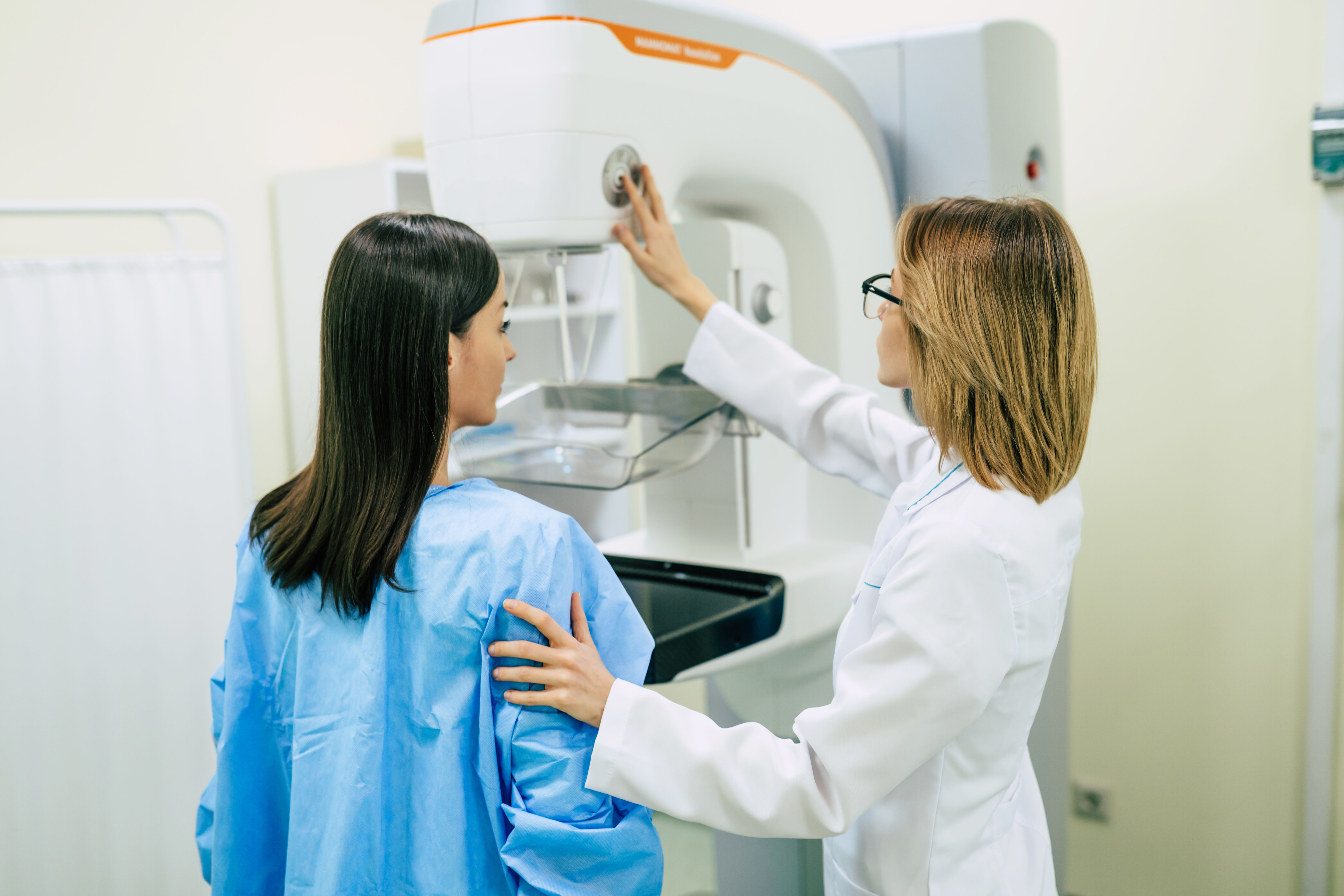This content is sponsored by MedStar Washington Hospital Center.
Lung cancer is the leading cause of cancer deaths worldwide and it kills 1.7 million people each year. Early detection of lung cancer is crucial to improve survival rates, and a new revolutionary robotic tool is helping doctors identify the cancer earlier to help improve outcomes.
MedStar Washington Hospital Center’s use of a revolutionary robotic navigational bronchoscopy tool, Auris Monarch™ Platform, can help identify lung cancers earlier and save lives.
Before robotics became more mainstream, a CT-guided biopsy helped doctors target areas that needed biopsies. Also, early in the disease, nodules that needed to be biopsied are often too small to biopsy by traditional means – meaning an opportunity for early lung cancer diagnosis is missed, said Dr. Jessica Wang Memoli, an interventional pulmonologist at MedStar Washington Hospital Center.
Now, this robotic navigation bronchoscopy technology is a big step toward enhanced accuracy, greater precision, increased safety and the ability to make definitive diagnoses.
With the Monarch, CT scan data are loaded into the robot’s computer, giving doctors the equivalent of turn-by-turn GPS navigation deep into the lungs, where structures are very small and difficult to view via traditional methods. The robotic technology also allows us to see distant areas in the lung that are not visible by traditional means. Increased visibility and access can lead to earlier detection of lung cancer.
“The robot lets us find lesions deeper into the bronchial tree and take tissue samples with unprecedented accuracy,” Dr. Wang Memoli said.
Monarch also allows doctors to go deeper to target and biopsy the tiniest nodules with a much greater degree of accuracy and with less risk to the patient.isn’t this the same thing as written above?
“That improved accuracy helps us better target potentially malignant growths for radiation oncology and other forms of treatment,” Dr. Wang Memoli said.
MedStar Washington Hospital Center is the only hospital in the Mid-Atlantic region utilizing this technology.
“We’re doing things we couldn’t have done with traditional methods, like sampling multiple nodules, on both sides of the lung, in one session. This technology has significantly improved interventional pulmonology and our approach to lung nodules,” Dr. Wang Memoli said.
So how does the Monarch work? When nodules are suspected, a patient undergoes a high-definition CT scan that is loaded into the robot’s computerto create a 3D virtual map of the complete airway pathway. The robot uses the map to generate an individual and unique pathway to the nodule based on the patient’s anatomy. The specialists are then able to steer a tiny tube with a tiny camera, light and various instruments for biopsies to the site of the nodule.
The Monarch is able to reach into the smaller parts of the lungs with ease, while still maintaining direct visualization, Dr. Wang Memoli said. Unlike other systems that use electromagnetic guidance to guide through the pathway, the Monarch uses multiple technologies to provide constant visual contact with the target. It’s something Dr. Wang Memoli calls “new and very exciting.”
“The reach is much broader, and the scope follows some amazing turns and bends to go where it needs to go. It’s real-time vision married to a sort of GPS algorithm,” Dr. Wang Memoli said.
Another big benefit of the Monarch is the stability. In the past, the specialists controlled everything manually. Dr. Wang Memoli shared that when the nodule was reached in a traditional bronchoscopy, she and her assistant had to hold the scope steady – a challenging task for human hands. Additionally, the patient is breathing normally, so the lungs are in motion.
“If either doctor or patient makes the slightest movement, we might lose the target and need to relocate,” Dr. Wang Memoli said.
However, the robot is aware of where it is at all times, she said.
“When it’s time to deploy an instrument for a tissue sample, we lock its position and it stays put, rock solid, while we biopsy the nodule,” Dr. Wang Memoli said.
The Monarch helps expedite the whole screening process for patients. Traditionally, there is a delay between biopsy and staging while specialists determine how advanced the disease is. The Monarch ends that delay because examination and staging occur in the same session.
“That goes a long way towards relieving the psychological burden on the patient when cancer is suspected,” Dr. Wang Memoli said.
And time is of the essence when it comes to a treatment plan. Performing the biopsy and staging at the same time can cut the usual wait time that it takes start treatment, Dr. Wang Memoli noted. The collaborative approach of doctors at MedStar Washington Hospital Center helps fast-track diagnosis and treatment as much as possible.
“The whole team works as a unit, gaining experience with each procedure and anticipating each other’s needs. It’s truly a multidisciplinary commitment—the doctors and bronchoscopy tech working together with nursing, anesthesia, radiology and pathology,” Dr. Wang Memoli said.
The Monarch helps with the diagnosis and treatment phases – and treatment could be on the horizon. In the future, the Monarch will likely deliver some form of ablation—focused heat or microwave energy to destroy tumors, Dr. Wang Memoli said.
“Imagine diagnosis, staging and treatment, all in half a day, on an outpatient basis,” Dr. Lazar said (you need to explain who lazar is).
Patient safety is a top priority at MedStar Washington Hospital Center, especially during the coronavirus pandemic, the doctors said. The hospital center’s employees wear masks, employ temperature checks and test patients for COVID-19 before a procedure.
“We’re committed to safety and giving our clinicians access to the best, most advanced tools possible,” Dr. Wang Memoli said. “That’s why MedStar Health is often at the front of the line for new technology—this commitment is organization-wide.”
Read more about the Monarch in a blog post on the MedStar Washington Hospital Center website.







